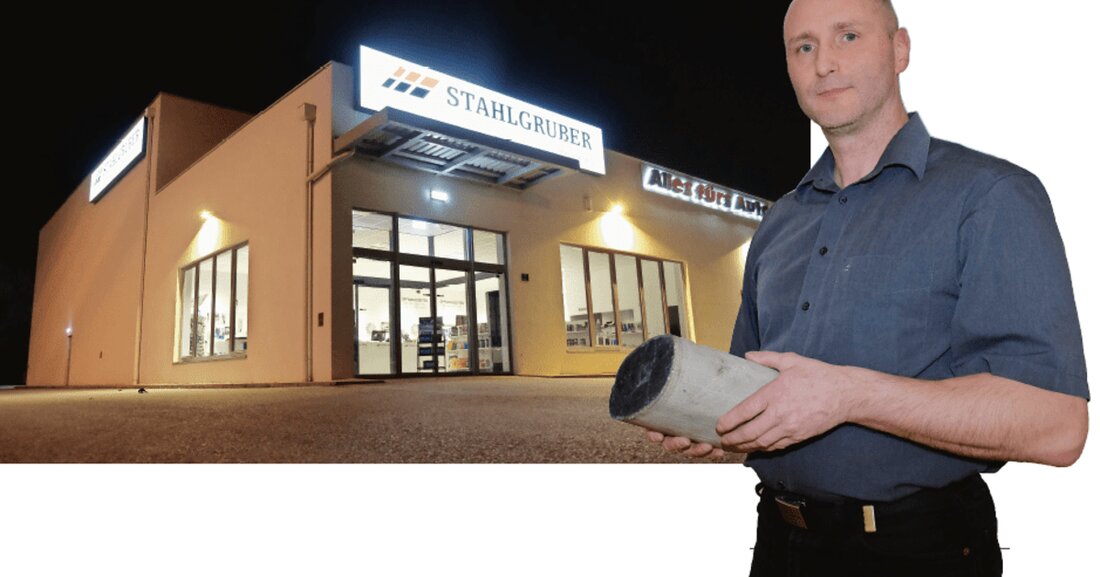Stahlgruber provides information about injection technology
Car supplies and accessories specialist STAHLGRUBER invited people to an exciting workshop evening on the topic of “diesel/petrol injection and exhaust technology” at its sales outlet in Ried im Innkreis.

Stahlgruber provides information about injection technology

Bosch technician Werner Ebner welcomed around 20 participants at the Stahlgruber workshop evening in the Innviertel who had come after work from the workshops and car dealerships in the area to learn more about the topics of injection technology and exhaust aftertreatment. The range of topics ranged from the market-dominating common rail diesel system to the reduction of pollutants inside and outside the engine to the various variants of petrol injection. Particularly interesting for the workshop owners among the participants: What business potential does the technical development of combustion engines bring with it, and what mistakes must be avoided at all costs?
THE FILTER PROBLEM
“I am a fan of correctly functioning particle filters,” says Werner Ebner before his presentation, justifying this with study results that show that the ultrafine particles in the exhaust gases of diesel and gasoline engines with direct injection pose a significant health risk. “The particles are so tiny that they can penetrate the cell walls – none of us want this dirt in our cells,” he emphasizes. Workshops are repeatedly confronted with defective particle filters that can no longer be burned out by driving at high speeds and should actually be replaced. “The problem is that very few car owners read the operating instructions for their vehicle and ignore the DPF lamp lighting up,” says Ebner. The result: After driving a further few kilometers, the check engine light also lights up as a result of the clogged filter, making a visit to the workshop unavoidable. “Unfortunately, replacing a DPF is very expensive, so the workshop likes to look for alternatives so as not to upset the customer,” says the Bosch technician from experience and points out the most common mistakes that are made: If you remove the DPF and then burn it out in an oven or clean it with a Kärcher, you risk damaging the fine fins. Conclusion: After reinstallation, the indicator light has gone out, but the filter effect is also gone, so that the particles are released into the environment unhindered. Deleting the error entry and incorrectly specifying a filter renewal via a diagnostic device also have the same effect. “There are special flushing devices for gentle filter cleaning - this is the only alternative to replacing the DPF,” Werner Ebner concludes the interesting chapter.
SAVINGS COME EXPENSIVE
As part of the stricter emissions regulations, diesel injectors and injection pumps are also being continually further developed. “The latest pumps provide a pressure of up to 2,700 bar, and the piezo injectors are equipped with pressure sensors, which optimizes their function and extends their durability,” explains Ebner. Bosch developed this technology for higher engine performance with lower consumption. Now the manufacturers have to decide whether to install this relatively expensive variant or whether they would rather put more effort into emissions control. Handling high-pressure pumps in the workshop requires special care and the right know-how. “Most CP4 high-pressure pumps have a very precisely defined installation position and are not equipped with a piston guide because the manufacturer wanted to save the 1.50 euros per component calculated for this,” the Bosch technician reveals a juicy detail. The problem for the automotive technician who doesn't know about this: If he doesn't bleed the injection system by flushing it after changing the filter, the piston pumps air after starting and rubs itself up. “The chips are then distributed throughout the entire system, which may result in a total loss,” warns Ebner. Only the injection pumps of some BMW and Audi models from 2018 onwards are equipped with a piston guide; unfortunately retrofitting is not possible on other or older vehicles.
RECOGNIZE POTENTIAL
The new technologies for exhaust gas purification are becoming increasingly complex, meaning that the number of wearing parts is also increasing. In addition to the filters mentioned, Werner Ebner also mentions the exhaust gas sensors for gasoline and diesel engines. In addition, the diagnostic effort required during maintenance and repairs increases significantly. More and more components have to be trained and adaptation values have to be reset. When it comes to gasoline injection, direct injection valves are currently very fashionable and are bringing the workshop growing spare parts sales. Between 2010 and 2015, the number of units in the aftermarket increased sixfold - and the trend continues to rise sharply.

 Suche
Suche
 Mein Konto
Mein Konto